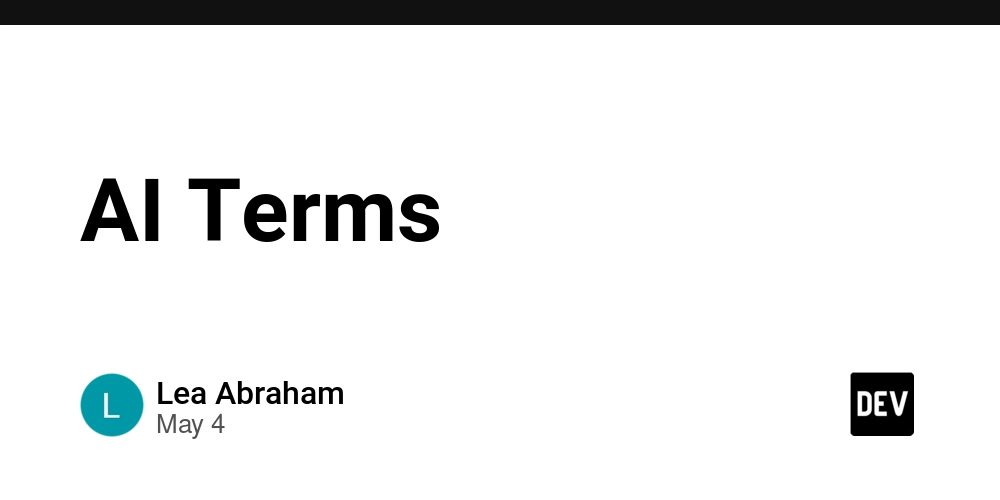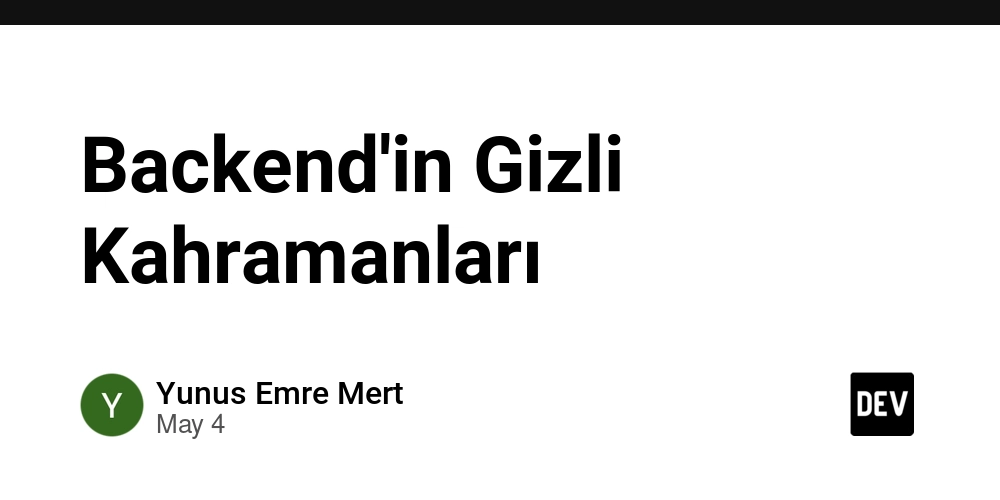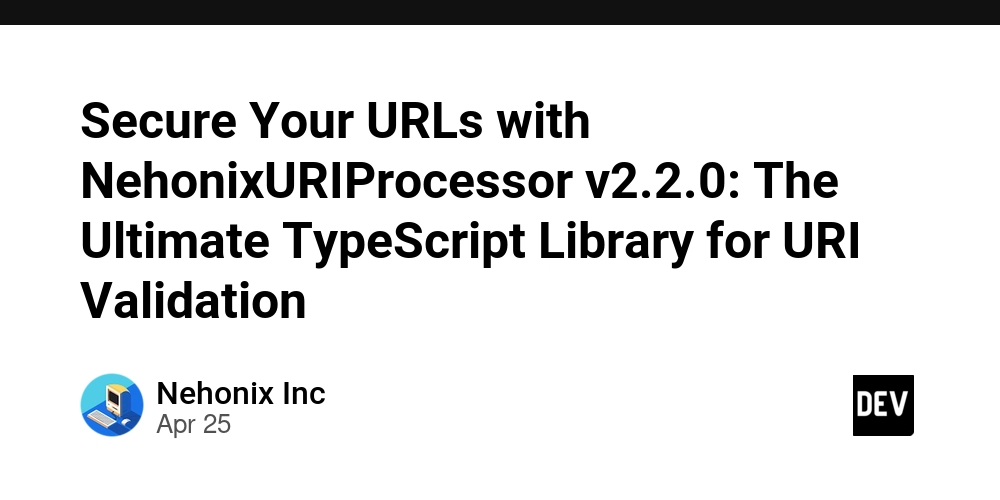I Lost It All - My Tech Story
Imagine losing everything, like you went back to square one, everything lost and down the drain because of one small, avoidable mistake. Not a catastrophic accident, not a once-in-a-lifetime tragedy, but a series of tiny, seemingly harmless decisions that snowballed into something irreversible. This is my story. I had just graduated from university, full of fire and ambition. My degree wasn’t in tech, but I was drawn to the world of possibilities I saw in it. This was in the early 20-teens, and the buzzword floating everywhere was “Fullstack Developer.” YouTube was overflowing with success stories, “I went from zero to six figures in a year,” “How I became a Fullstack developer without a CS degree.” It was intoxicating. The idea that I could break out of the trenches, skip the struggle, and become a success story myself. So, I jumped in. I started hoarding resources-free courses, paid Udemy tutorials, and YouTube walkthroughs. My bookmarks bar became a graveyard of half-started journeys. I’d spend hours each day coding along to tutorials, copying projects line by line. I called it “building my skills,” but really, I was just vibe coding, floating through it all without a map. It felt like progress. I was busy. But deep down, something didn’t feel right. At first, I focused on frontend development, HTML, CSS, JavaScript, and React. It was visual, colorful, and gave me a sense of creative control. It felt like the right choice for someone wondering how to start a tech career from scratch. Then came the noise: “Frontend is dying,” “Backend developers earn more,” “Best programming language to learn in 2025.” I began to feel like I was on the wrong path. Every tweet and video made it seem as if you weren’t learning APIs, databases, and infrastructure, you were falling behind. So I pivoted. Again. I told myself: If I can just learn .NET Core (C#), I’ll finally be taken seriously. I began stockpiling backend development materials, registering for even more courses, and diving into the backend world. I explored Docker, databases, and tried to understand how full systems worked. It felt like a smart, future-proof decision. Then Web3 happened. Suddenly, every developer roadmap was pointing to Solidity, Clarity, and blockchain tech. I saw people deploying million-dollar NFT projects, getting hired remotely for $300k+ jobs. “Web3 is the future of tech,” they said—and I believed it. So I ran after it. Learning how to become a Web3 developer became my new obsession. But before I could truly build something meaningful in the space, AI came crashing through the front door. ChatGPT, LangChain, Stable Diffusion. Prompt engineering was suddenly the hottest job in tech. “This is the future,” they said. Build tools with LLMs, create autonomous agents, and solve anything with AI. Once again, I pivoted. I joined Discord groups, enrolled in the latest AI courses, and started building toy projects using Python and LLM APIs. I told myself, This is it. This is the one that’ll stick. But one evening, something changed. I opened my laptop, ready to fire up yet another tutorial. But instead, I just stared at the screen. My GitHub profile was a scattered mess, tons of repositories with fancy names and zero traction. My notes folder was overflowing with half-digested AI, Web3, and backend theory. My to-do notes were full of “learning,” but I had no shipped projects, no real contributions, no proof of growth. It hit me hard: I had spent years chasing everything and caught nothing. I had no identity. No specialization. Just a trail of half-baked skills and abandoned roadmaps. In trying to ride every wave, I drowned. In trying to learn everything, I learned nothing well enough to stand out. I didn’t fail because I lacked passion; I failed because I lacked direction. I wasn’t building depth. I wasn’t staying long enough to master anything. I was chasing hype, not building value. If I had to name my biggest mistake, it wasn’t choosing the wrong programming language or stack. It was not choosing anything long enough to grow in it. Every time things got hard—or a shinier opportunity came up, I jumped ship. In hindsight, there was a better path. I should’ve picked one domain, Frontend, Backend, or Web3, and committed to it for at least a year. A focused, immersive year. Not a week. Not a weekend binge. A full year of building real things. I should’ve taken on real-world projects. Contributed to open source. Solved problems that mattered to me. Shipped things, even if they were imperfect. Had I stuck with JavaScript, I could have grown into a senior React or Node.js developer. I could’ve freelanced, built a side business, or joined a startup. But I let fear and FOMO drive my choices. Every pivot was a retreat, disguised as momentum. And I know I’m not alone. Right now, someone is on their fifth Udemy course of the year. They're switching from JavaScript to Rust to Solidity, telling themselves, This one will work.

Imagine losing everything, like you went back to square one, everything lost and down the drain because of one small, avoidable mistake. Not a catastrophic accident, not a once-in-a-lifetime tragedy, but a series of tiny, seemingly harmless decisions that snowballed into something irreversible.
This is my story.
I had just graduated from university, full of fire and ambition. My degree wasn’t in tech, but I was drawn to the world of possibilities I saw in it.
This was in the early 20-teens, and the buzzword floating everywhere was “Fullstack Developer.” YouTube was overflowing with success stories, “I went from zero to six figures in a year,” “How I became a Fullstack developer without a CS degree.” It was intoxicating. The idea that I could break out of the trenches, skip the struggle, and become a success story myself.
So, I jumped in.
I started hoarding resources-free courses, paid Udemy tutorials, and YouTube walkthroughs. My bookmarks bar became a graveyard of half-started journeys. I’d spend hours each day coding along to tutorials, copying projects line by line. I called it “building my skills,” but really, I was just vibe coding, floating through it all without a map.
It felt like progress. I was busy. But deep down, something didn’t feel right.
At first, I focused on frontend development, HTML, CSS, JavaScript, and React. It was visual, colorful, and gave me a sense of creative control. It felt like the right choice for someone wondering how to start a tech career from scratch.
Then came the noise: “Frontend is dying,” “Backend developers earn more,” “Best programming language to learn in 2025.” I began to feel like I was on the wrong path. Every tweet and video made it seem as if you weren’t learning APIs, databases, and infrastructure, you were falling behind.
So I pivoted. Again.
I told myself: If I can just learn .NET Core (C#), I’ll finally be taken seriously. I began stockpiling backend development materials, registering for even more courses, and diving into the backend world. I explored Docker, databases, and tried to understand how full systems worked.
It felt like a smart, future-proof decision.
Then Web3 happened.
Suddenly, every developer roadmap was pointing to Solidity, Clarity, and blockchain tech. I saw people deploying million-dollar NFT projects, getting hired remotely for $300k+ jobs. “Web3 is the future of tech,” they said—and I believed it.
So I ran after it. Learning how to become a Web3 developer became my new obsession.
But before I could truly build something meaningful in the space, AI came crashing through the front door.
ChatGPT, LangChain, Stable Diffusion. Prompt engineering was suddenly the hottest job in tech. “This is the future,” they said. Build tools with LLMs, create autonomous agents, and solve anything with AI. Once again, I pivoted.
I joined Discord groups, enrolled in the latest AI courses, and started building toy projects using Python and LLM APIs. I told myself, This is it. This is the one that’ll stick.
But one evening, something changed.
I opened my laptop, ready to fire up yet another tutorial. But instead, I just stared at the screen. My GitHub profile was a scattered mess, tons of repositories with fancy names and zero traction. My notes folder was overflowing with half-digested AI, Web3, and backend theory.
My to-do notes were full of “learning,” but I had no shipped projects, no real contributions, no proof of growth.
It hit me hard: I had spent years chasing everything and caught nothing.
I had no identity. No specialization. Just a trail of half-baked skills and abandoned roadmaps.
In trying to ride every wave, I drowned. In trying to learn everything, I learned nothing well enough to stand out.
I didn’t fail because I lacked passion; I failed because I lacked direction.
I wasn’t building depth. I wasn’t staying long enough to master anything. I was chasing hype, not building value.
If I had to name my biggest mistake, it wasn’t choosing the wrong programming language or stack. It was not choosing anything long enough to grow in it. Every time things got hard—or a shinier opportunity came up, I jumped ship.
In hindsight, there was a better path.
I should’ve picked one domain, Frontend, Backend, or Web3, and committed to it for at least a year. A focused, immersive year. Not a week. Not a weekend binge. A full year of building real things.
I should’ve taken on real-world projects. Contributed to open source. Solved problems that mattered to me. Shipped things, even if they were imperfect.
Had I stuck with JavaScript, I could have grown into a senior React or Node.js developer. I could’ve freelanced, built a side business, or joined a startup. But I let fear and FOMO drive my choices.
Every pivot was a retreat, disguised as momentum.
And I know I’m not alone.
Right now, someone is on their fifth Udemy course of the year. They're switching from JavaScript to Rust to Solidity, telling themselves, This one will work.
But if you haven’t built anything, haven’t shipped anything, haven’t committed to the process, you’re just delaying the pain.
Here’s what I’ve learned:
Mastery beats curiosity. Commitment beats hype. Real depth beats scattered potential.
So if you’re reading this, and you're stuck in tutorial hell, ask yourself:
Are you learning? Or are you running?
Lesson
Don’t let hype hijack your journey. The fastest way to succeed in tech is not by chasing every shiny new tool, but by sticking with one path long enough to get good. You don’t need 10 skills. You need one skill that’s sharp, tested, and valuable.
If you're wondering how to avoid burnout in tech, or asking is coding even worth it in 2025?
You're not alone. I’ve asked the same. But now I know: your breakthrough won’t come from a new course or trend. It comes from quiet, consistent work done with intent.
Ignore the noise. Ignore the hype cycles. Tech changes fast, yes, but the people who thrive are those who go deep, not wide. Mastery beats curiosity when it comes to long-term impact.
I lost years I can’t get back. But I gained a lesson that I’ll carry forward: you don’t need to be everywhere. You just need to be somewhere, fully present, fully committed.
That’s where growth happens.
If you want to see some of the side projects I built through this chaotic journey of failure, check out my posts.
Follow me on X to stay updated on what I’m up to in the world of Web3, AI, and what it means to grow as a developer in 2025.





































































































































































![[The AI Show Episode 145]: OpenAI Releases o3 and o4-mini, AI Is Causing “Quiet Layoffs,” Executive Order on Youth AI Education & GPT-4o’s Controversial Update](https://www.marketingaiinstitute.com/hubfs/ep%20145%20cover.png)





























































































































![[FREE EBOOKS] Learn Computer Forensics — 2nd edition, AI and Business Rule Engines for Excel Power Users & Four More Best Selling Titles](https://www.javacodegeeks.com/wp-content/uploads/2012/12/jcg-logo.jpg)





![From Art School Drop-out to Microsoft Engineer with Shashi Lo [Podcast #170]](https://cdn.hashnode.com/res/hashnode/image/upload/v1746203291209/439bf16b-c820-4fe8-b69e-94d80533b2df.png?#)






































































































(1).jpg?#)
































_Inge_Johnsson-Alamy.jpg?width=1280&auto=webp&quality=80&disable=upscale#)











































































































![Apple to Split iPhone Launches Across Fall and Spring in Major Shakeup [Report]](https://www.iclarified.com/images/news/97211/97211/97211-640.jpg)
![Apple to Move Camera to Top Left, Hide Face ID Under Display in iPhone 18 Pro Redesign [Report]](https://www.iclarified.com/images/news/97212/97212/97212-640.jpg)
![Apple Developing Battery Case for iPhone 17 Air Amid Battery Life Concerns [Report]](https://www.iclarified.com/images/news/97208/97208/97208-640.jpg)
![AirPods 4 On Sale for $99 [Lowest Price Ever]](https://www.iclarified.com/images/news/97206/97206/97206-640.jpg)
































![[Updated] Samsung’s 65-inch 4K Smart TV Just Crashed to $299 — That’s Cheaper Than an iPad](https://www.androidheadlines.com/wp-content/uploads/2025/05/samsung-du7200.jpg)




































































